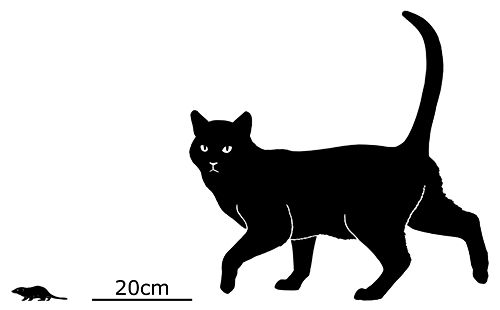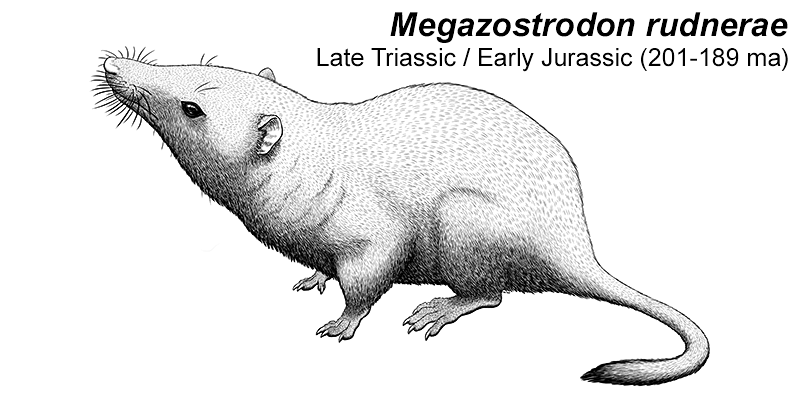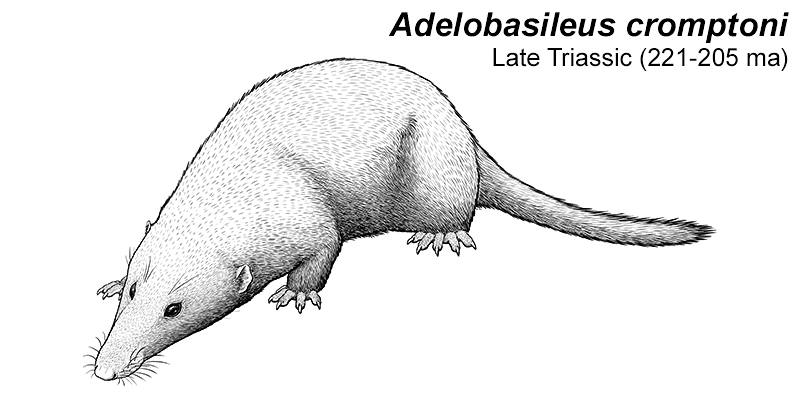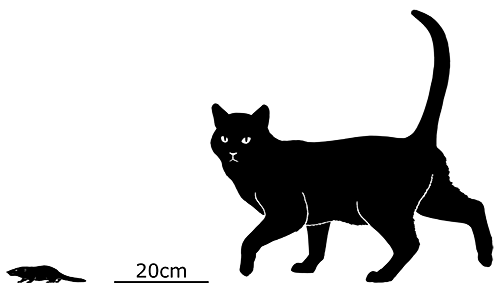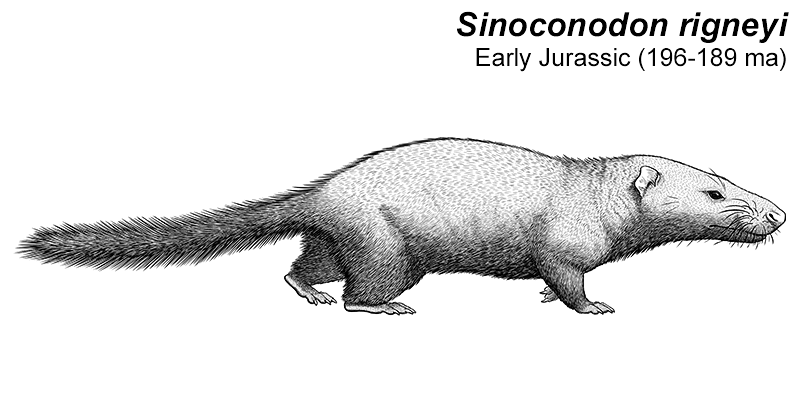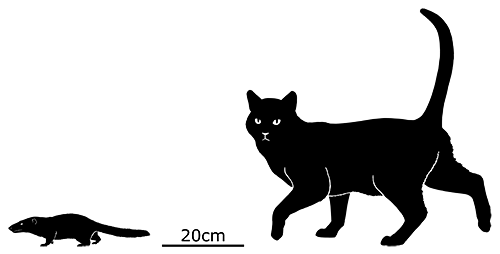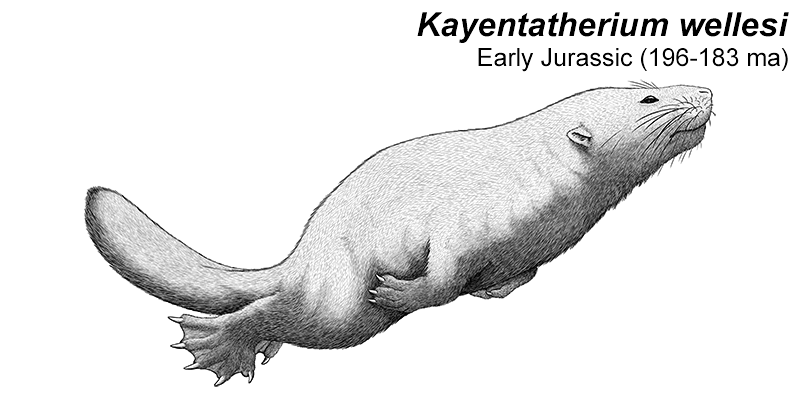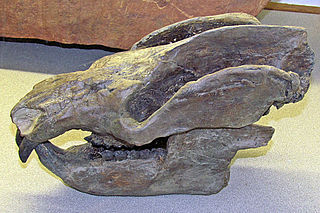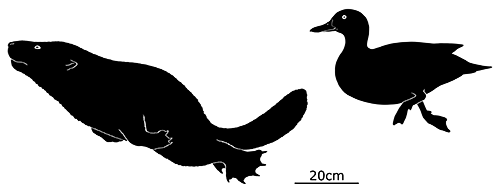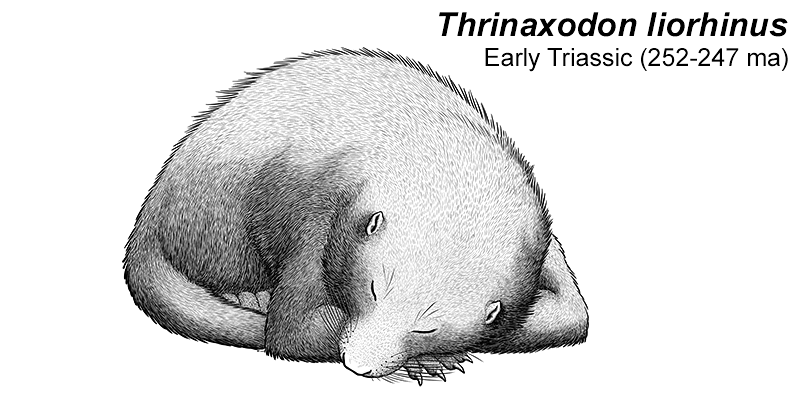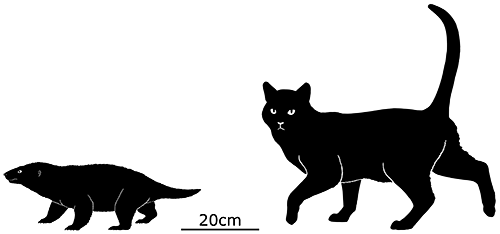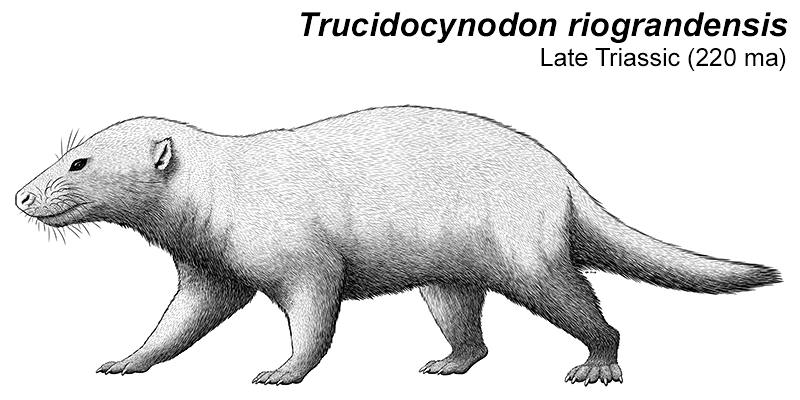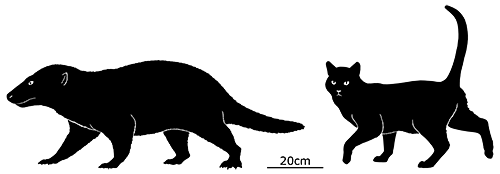Megazostrodon
If there’s one Mesozoic mammal that’s been relatively well-mentioned in dinosaur books and popular media for many years, it’s undoubtedly Megazostrodon. Often depicted as “the first mammal”, it actually occupies a point in the mammal evolutionary tree somewhere between the earliest mammaliaformes and the common ancestor of all modern groups.
Megazostrodon lived during the very end of the Triassic and the Early Jurassic of South Africa (201-189 mya), and is represented by some near-complete fossil material – a rarity for this sort of small ancient mammal, most of which are only known from teeth and other fragments.
About the size of a mouse, only about 12cm long (5″), it was an insectivore with teeth adapted for chewing and crunching through hard arthropod shells. Enlarged regions of its brain associated with the senses of hearing and smell show it was likely nocturnal, occupying an ecological niche similar to modern shrews.
It probably reproduced similarly to modern monotremes, laying small parchment-shelled eggs and lactating from patches of skin. Fossils of the closely related and similar-looking Morganacudon show evidence of toothless infants and juveniles with a single set of milk teeth, suggesting these were some of the first mammals whose young were entirely dependent on milk during the earliest stages of life.
